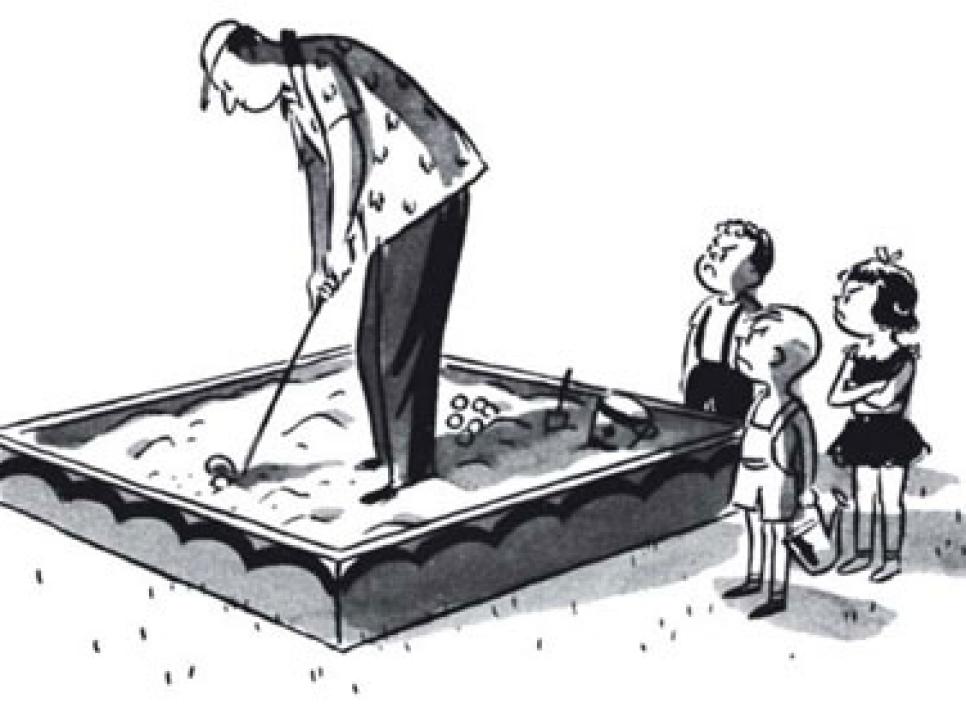This Just In: You Need A Short Game

The easiest way to become less bad at golf is to become less bad at putting, and the easiest way to become less bad at putting -- as sport psychologist Dr. Bob Rotella once told me -- is to become less bad at pitching. Unless you're my friend Bruce, two-foot par putts are easier to make than 10-foot par putts (or 30-foot bogey chips), so if you can learn to pitch the ball closer to the hole, after screwing up an approach shot, your putting stats will improve, your handicap will go down, and you'll stop threatening to switch to tennis.
The bad news is that becoming less bad at pitching requires conscientious effort. You have to acquire a decent technique, probably by taking lessons, and then you have to work on what you've learned, to develop "feel." At the practice range, my approach has usually been to ignore my short game altogether, by hitting 8-irons until I've grooved a steady, repeatable shank, and then working on low duck hooks and high slices with my driver until it's time to go home or tee off.
Two years ago, my club decided to do something about that -- not about me specifically, but about short shots in general. We passed the hat to raise money to build a chipping-and-pitching practice area, which Fran, our pro, had designed. That idea died when the global economy fell apart, but the world's troubles were good for us, because they led us to think of a cheaper alternative.
Instead of building the golf equivalent of a rowing machine (appealing in theory, too boring to use), we created a sort of poor man's short-game facility, at a cost of next to nothing. Gary, our superintendent, mowed the first 25 yards of the range to fairway height and groomed the turf, and Fran installed target flags in strategic locations. Now we can practice short shots from anywhere on the regular practice tee, and it's so easy that many people actually do it. An unanticipated benefit: Now, when we dribble a 6-iron over the front of the tee, we can follow it up with a couple of similar-length pitches in the same direction, making the squink seem intentional.
Our new practice area has reawakened my interest in working on my short game in other venues as well. I now practice a variety of pitch shots in my living room -- high over the couch, low under the table, waist-high into the back of a chair -- and often break nothing at all.